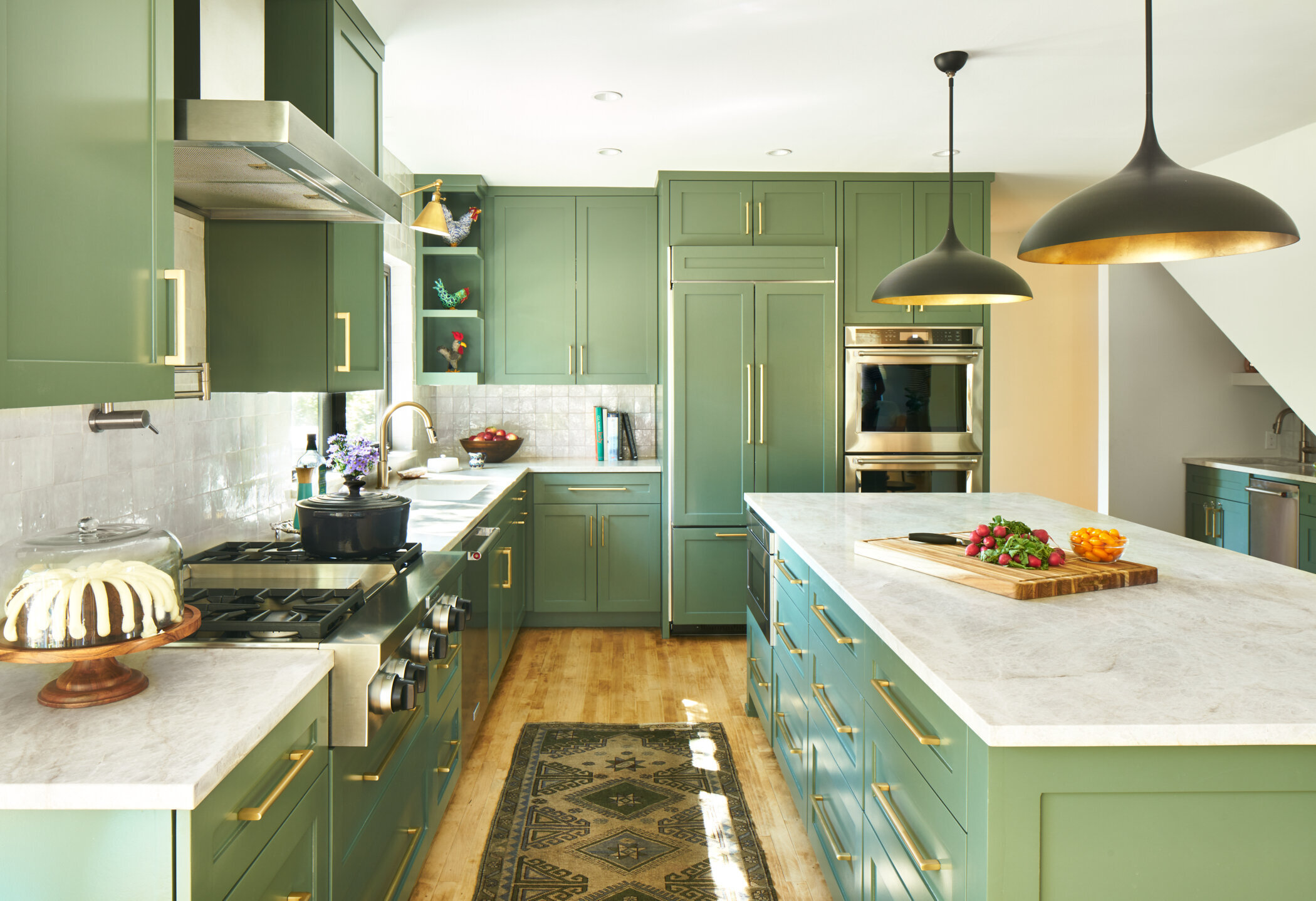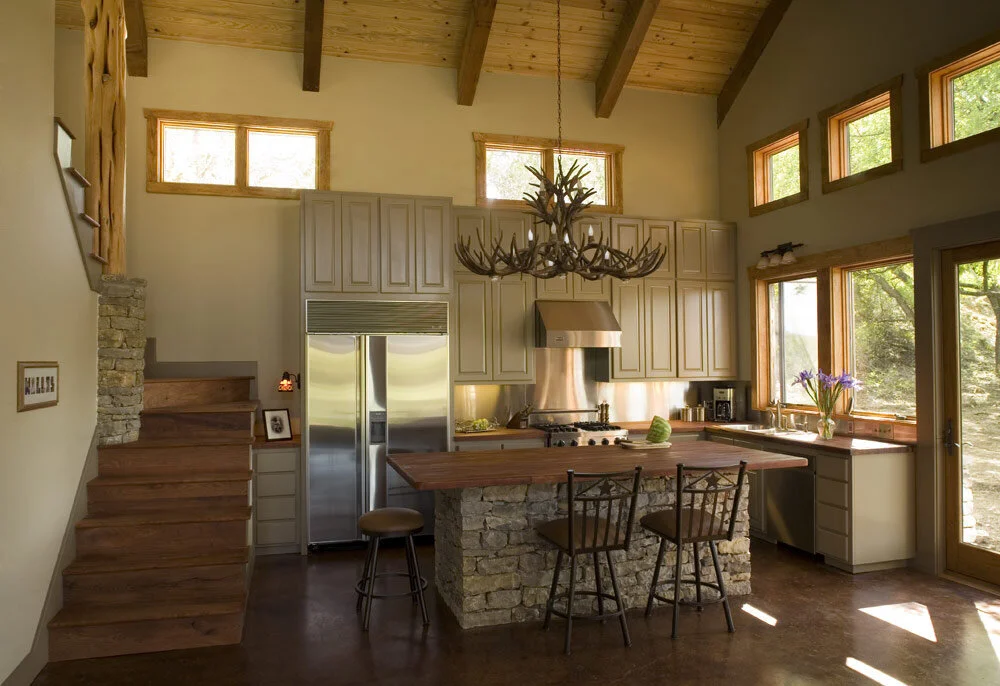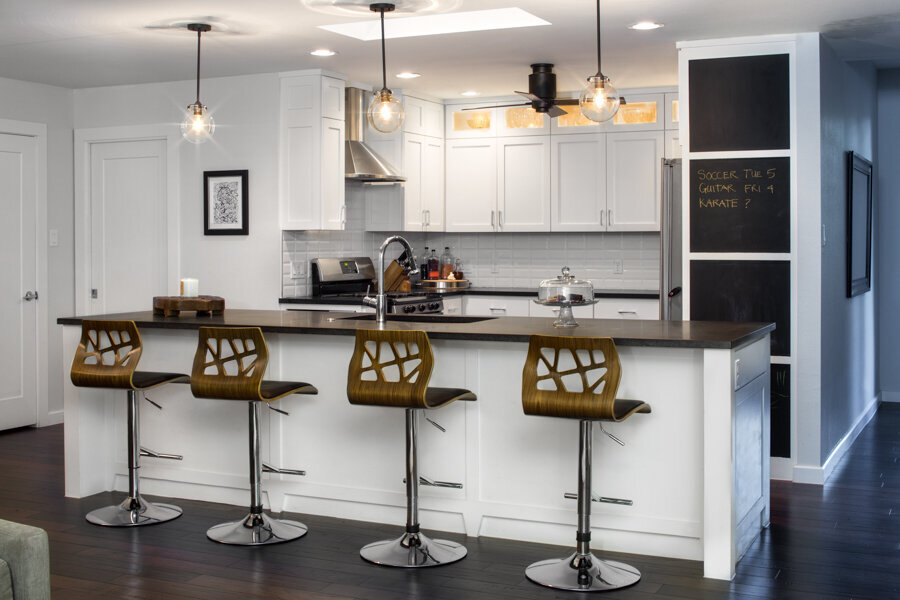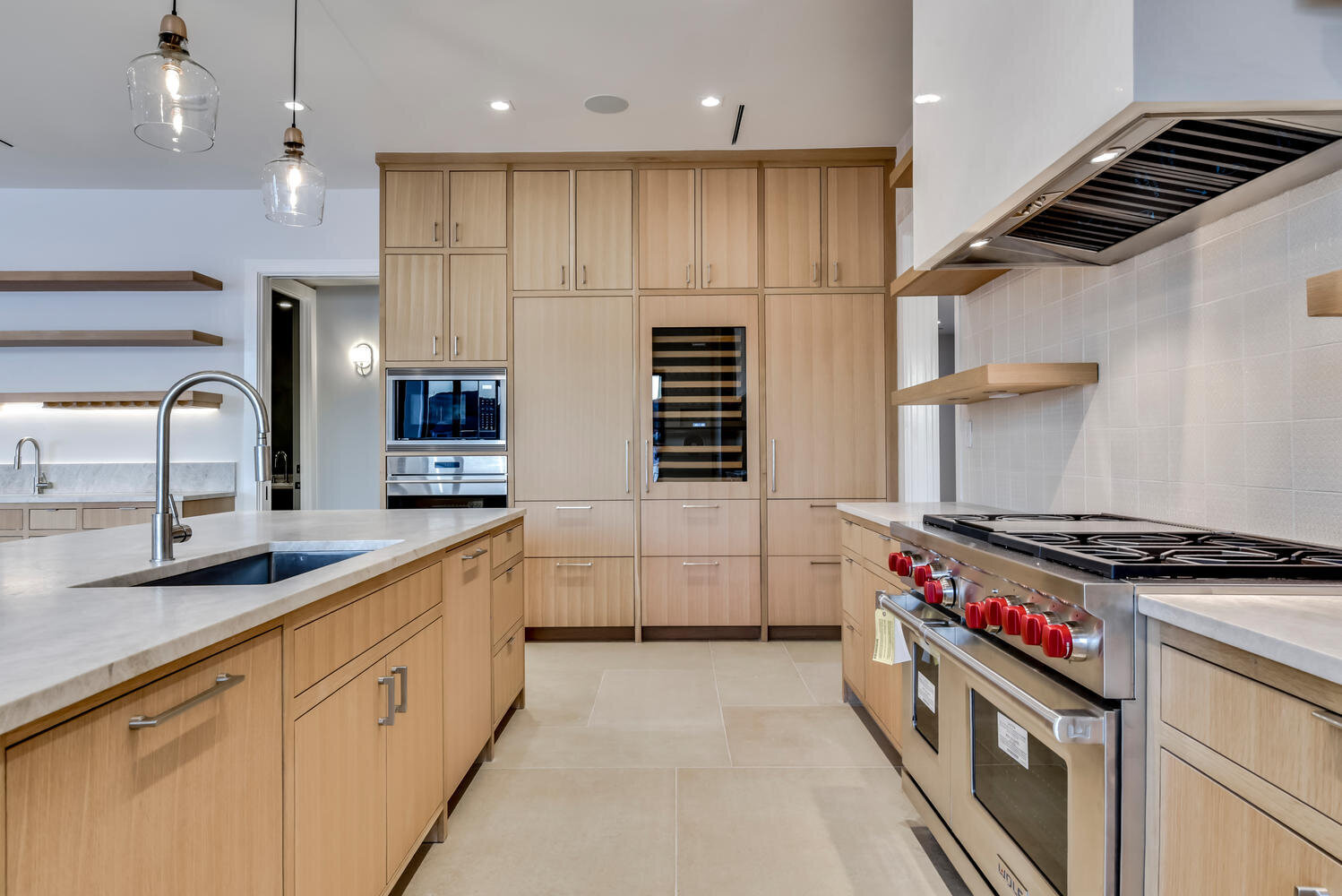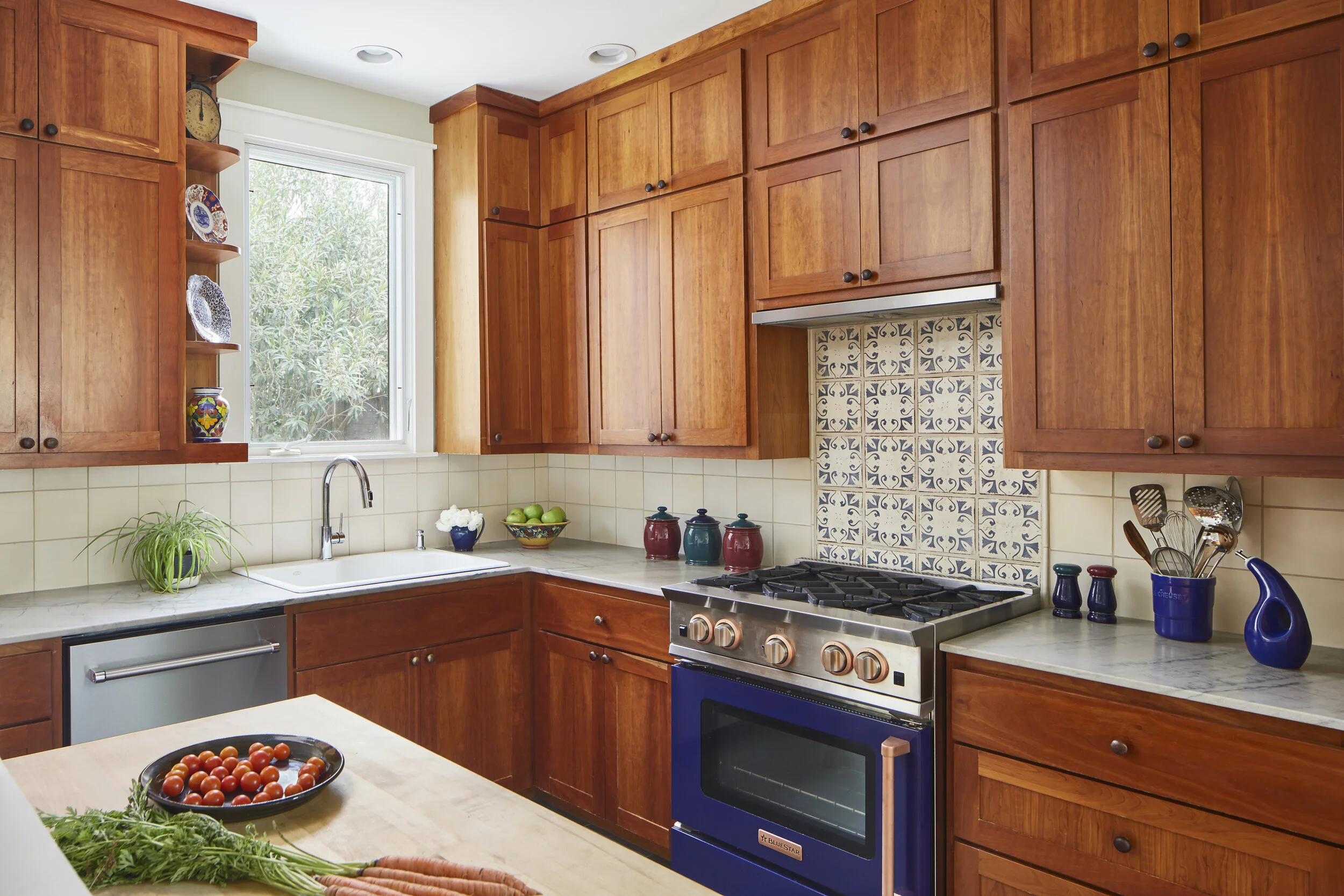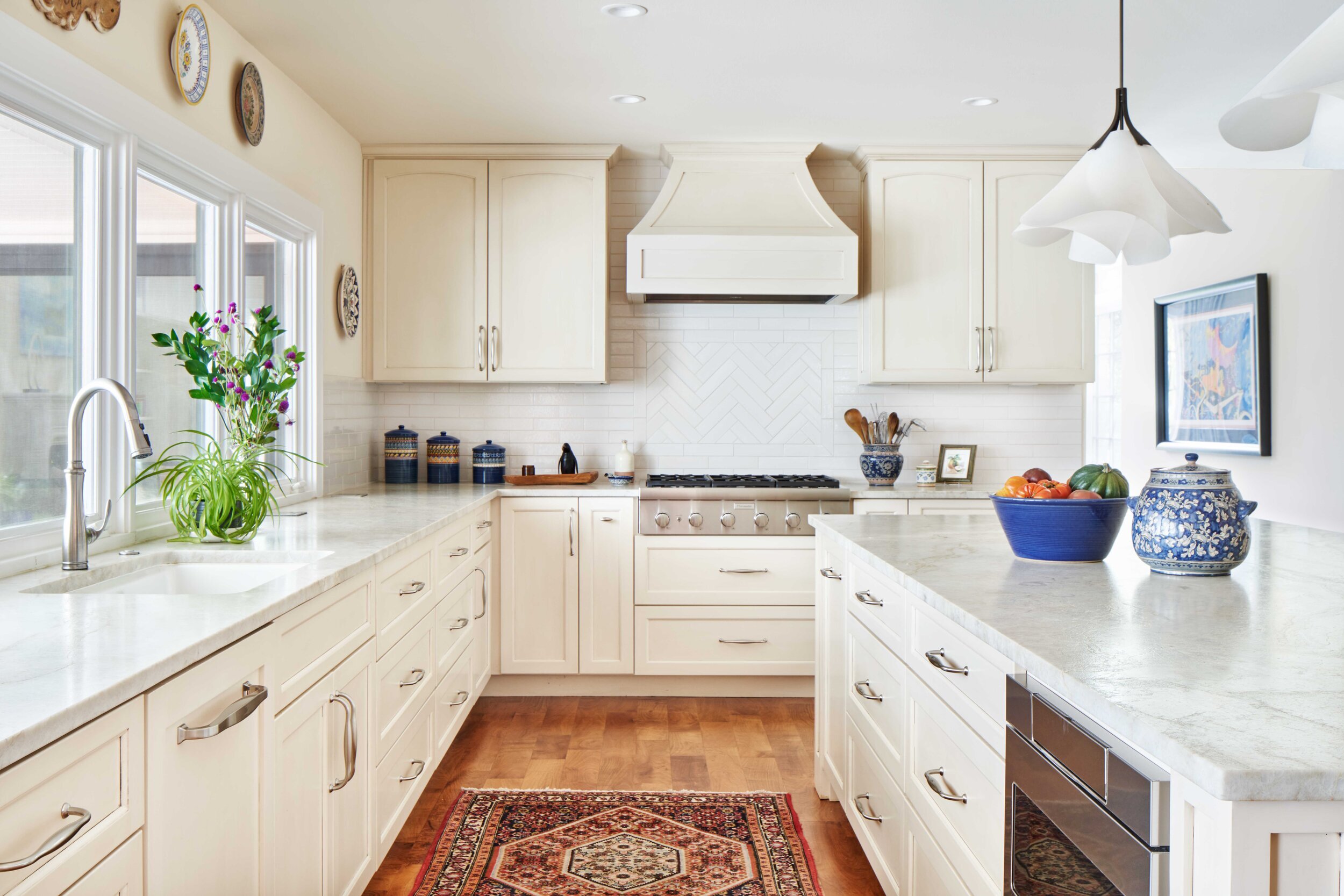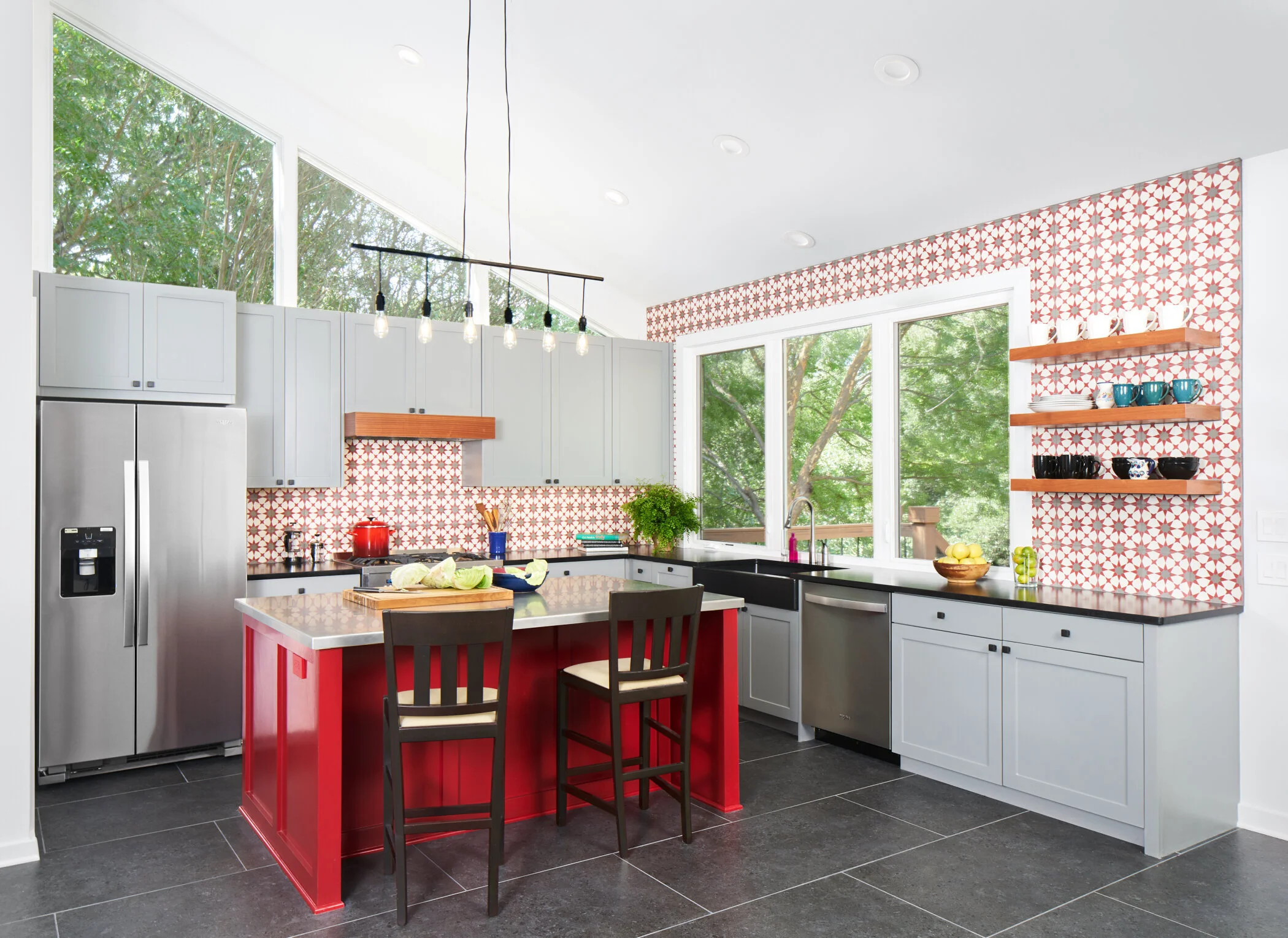The Architect’s Guide to Kitchen Cabinet Styles
Our Austin Architects Share Kitchen Cabinet Door Styles, Hardware Options, and Design Ideas
When it comes to designing your kitchen, the cabinet selections will be one of the biggest kitchen design elements to consider. With so many options out there, choosing the right kitchen cabinets is a difficult task for many homeowners looking to build or renovate their dream kitchen. Our team of architects in Austin, Texas, have created the ultimate guide to kitchen cabinet styles to help make the selection process a little easier. We review the top four kitchen cabinet styles, the difference between inset and overlay cabinets, hardware options, and functional storage designs to consider. Let’s dive in and find the perfect cabinetry options for your new kitchen.
The Top 4 Kitchen Cabinet Styles
Whether you are building your first house or planning your first kitchen remodel, you will have to select a cabinet style that works with your home’s overall look and feel. Here are the top four kitchen cabinet styles to consider.
1. Shaker Cabinets
Shaker cabinets are one of the most popular cabinet styles today because they offer classic charm with a streamlined look, and they complement almost any home design style. Shaker cabinets feature a flat panel framed with a simple border. The width of the border can range in size from a thick to a slim profile trim. Depending on the finish, shaker cabinets are perfect for traditional, transitional, or even contemporary kitchens. They are one of our architects’ favorite kitchen cabinet styles to use.
Shaker cabinets offer classic charm with a streamlined look.
Photo by DK Studio
2. Flat-panel or Slab Cabinets
Flat-panel or slab cabinets offer a minimalist look and feature one flat panel without any additional trim, providing a sleek finish perfect for contemporary kitchens. This cabinet style often uses integrated or low-profile hardware to keep the design clean and simple. A benefit of solid wood slab cabinets is that they showcase the material without extra frills, allowing the beauty of the wood grain and stain to shine through.
Flat panel cabinets offer a minimalist look and feature one flat panel without any additional trim, providing a sleek finish perfect for contemporary kitchens.
Photo by DK Studio
3. Raised Panel Cabinets
Raised panel kitchen cabinet doors have the most traditional appearance. This cabinet style typically features more detailed trim and tiered steps up to a raised panel in the center. Raised panel cabinets offer visual interest and classic charm perfect for kitchens in older homes or new builds looking to recreate an old-world feel.
Raised panel cabinets typically feature more detailed trim and tiered steps up to a raised panel in the center.
Photo by DK Studio
4. Glass-front Cabinets
Glass-front cabinets are a kitchen cabinet style you probably won’t use throughout the entire kitchen. However, they make for great accent features. Glass cabinets include a wood border and a glass panel in the center. When using glass cabinet doors, consider adding cabinet lighting and an attractive finish to the back panel to make for a more interesting visual feature.
Glass kitchen cabinets make for great accent features.
Photo by DK Studio
Inset vs. Overlay Cabinets: What’s the Difference Between These Kitchen Cabinet Styles?
Choosing cabinet doors is just the first step to designing your kitchen cabinets. Next, you will have to choose between inset and overlay cabinet styles. These two different styles of cabinets can change the entire look of your kitchen. So, what’s the difference between them?
Inset Cabinet Doors
Inset cabinet doors are set into the frame and fit flush against the cabinet structure when closed. This style of door offers a cleaner appearance and has a furniture-like quality to it. However, inset doors require additional design planning and will cost more than overlay cabinet doors.
Inset cabinets offer a cleaner appearance and have a furniture-like quality to them.
Photo by DK Studio
Overlay Cabinet Doors
Overlay cabinet doors can feature full or partial overlay designs. Full overlay doors have a similar appearance to inset doors at a lower cost. They cover the entire cabinet face and structure, so all you see are the door fronts. Partial overlay doors cover a portion of the cabinet structure, leaving a gap in between doors. The partial overlay style is one of the most commonly seen door styles in kitchen design.
Integrated vs. Accent Kitchen Cabinet Hardware
When it comes to kitchen cabinet hardware, there are endless options from which to choose! However, all the selections out there can be broken down into two simple categories.
Integrated Cabinet Hardware
Integrated kitchen cabinet hardware is incorporated into the cabinet design, allowing minimal or no hardware to be seen. Integrated hardware can include a recess along the edge of the cabinet to grip or a push latch that springs open when pressed. This style of hardware creates a sleek and minimalist design.
Accent Cabinet Hardware
Accent kitchen cabinet hardware, on the other hand, aims to stand out. Decorative drawer pulls and knobs come in thousands of colors, styles, and finishes. When selecting accent hardware, it is important to consider sizing and other finishes in the home.
Other Kitchen Cabinet Design Ideas to Consider
One of the most significant advantages of custom cabinetry is the ability to maximize the kitchen layout with built-in function and optimized storage solutions. Here are a few of our architects’ favorite kitchen cabinet features that make a huge difference in kitchen designs.
Custom and Bold Kitchen Cabinets
Photo by DK Studio
Appliance garages allow you to hide small countertop appliances while keeping them within easy reach.
Lazy Susans are a great solution for organizing difficult corner cabinets and maximizing available storage space.
Custom pull-outs for oils and spices can make organizing ingredients a breeze.
Ceiling height cabinets create a more luxurious look while adding additional storage space for those special occasion kitchen items like cake stands, serving trays, and holiday dishes.
In homes with no space for a china hutch, custom velvet-lined drawers provide the perfect place to store silverware.
The more drawers, the better! Drawers offer more easily accessible storage than cabinets, especially for pots and pans.
Tray dividers easily organize cutting boards, baking sheets, and platters.
Never reach into a drawer of loose knives. Knife block pull-out cabinets offer a practical and safe solution for storing sharp kitchen utensils.
When it comes to kitchen cabinet design, it’s all in the details!

